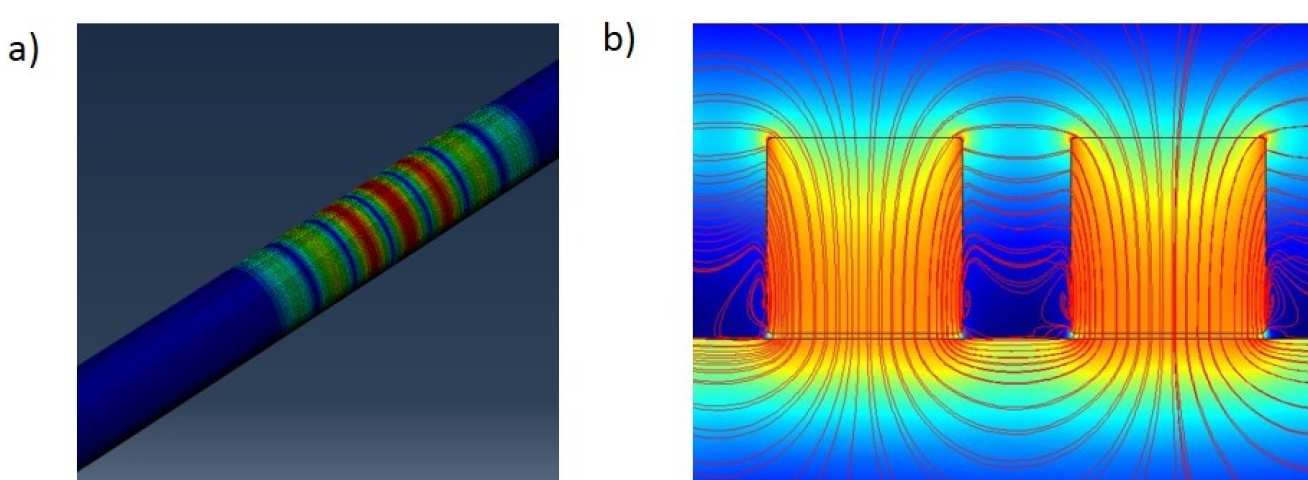
This project investigates the possibility of implementing an electromagnetic acoustic transducer (EMAT) for torsional guided wave testing. Torsional guided waves are non-dispersive and travel for long distances because of moderate attenuation, this makes them ideal for long range guided wave screening and monitoring of pipelines.
EMATs have very low sensitivity, despite the low signal strength that these transducers produced (compared to the more common piezoelectric transducers) they have several advantages: The excitation mechanism does not require contact therefore the transducer is not affected by changes in adhesive properties, and it can also be used when the structure is coated/painted without removal of the coating. Additionally, the transducer’s stability over long time periods (several years) is expected to be significantly better. The long term stability allows us to use the transducer for a Structural Health Monitoring (SHM) application. This method monitors the changes in the ultrasound signal, which is caused by a change in the structure. This way it is possible to detect much smaller defects then in the traditional inspection mode. The operational and environmental conditions influence the ultrasound signal propagation. For robust monitoring applications the compensation for environmental effects is essential. This project will also investigate the effect of these influences and the possible signal processing techniques for compensation specifically for the EMAT transducers that are being used.
Funding Sources and Sponsors
EPSRC - MEND.P43630
References
[1] Vatche A Attarian, Frederic B Cegla and Peter Cawley (2014): Long-term stability of guided wave structural health monitoring. Report, Imperial College London.
[2] Andrea Galvagni (2013): Pipeline Health Monitoring. PhD Thesis, Imperial College London
[3] Rosalba Carandente (2011): Interaction between the fundamental torsional guided wave mode and complex defects in pipes. PhD Thesis, Imperial College London